Links may direct to affiliate sites. Purchases made through these links support our family’s work in spreading the Gospel to unreached areas.
Our new quarter began last week, and with it, a new unit of science. We’re now focusing on chemistry, the one science I admit gives me that vague feeling of being in way over my head no matter how many classes I’ve taken or how many times I’ve taught it. I’m not sure where the intimidation factor comes in, exactly, but I cannot seem to shake the sense that no matter how much I’ve learned (and how much the models have changed), part of me is still that high school sophomore seated at the long black lab table who accidentally set her lab partner’s very densely Aqua Netted bangs aflame with a too-enthusiastic twist of the bunsen burner flame control.
True story.
Happily, in our own homeschool, there have been no chemistry mishaps. And, naysayers take note: I seem to have also not passed on my lack of full comprehension of the topic, as well. For proof, check out these videos of high school-aged Mathaus explaining atomic structure, the anatomy of atoms, chemical bonds, and even skunk spray. The guy can casually weave together a narrative that makes chemistry and its finer workings sound, well… approachable. I guess I didn’t do too badly.
Which was my goal with this younger batch: a familiarity with elements, atoms, and the like that opens the door to further learning and a greater understanding of the world God created. It’s a tall order. A very tall order.
I’ll be honest, I find most chemistry curriculum to be, well… awful. The best I’ve ever used was the very first edition of Friendly Chemistry, which, back in the day, was a bundle of photocopied pages carefully written to hold the hand of a homeschooling mom as she meandered through games and hands-on activities designed to demystify the science for her kids. The worst was Apologia, which made me give a slow blink literally every time my high schooler needed help. In the end, at the high school level, I decided on a combination of Khan Academy lessons and tons of living science books from the extensive and beautiful Sabbath Mood Homeschooling list.
So how to help these younger kids get to the place where those upper levels come alive? How to introduce them to a new area of science that holds as much discovery and joy as any other, but can seem so much more on the outside?
Once again, I’m falling back on the tried and true: living books and experiments designed to not on explain the workings of the world in relation to chemistry, but also to ignite wonder. So far, it’s working.
Case in point: a recent day of “wintery mix” found John Mark leafing through Junk Drawer Chemistry, and multiple explorations ensued.
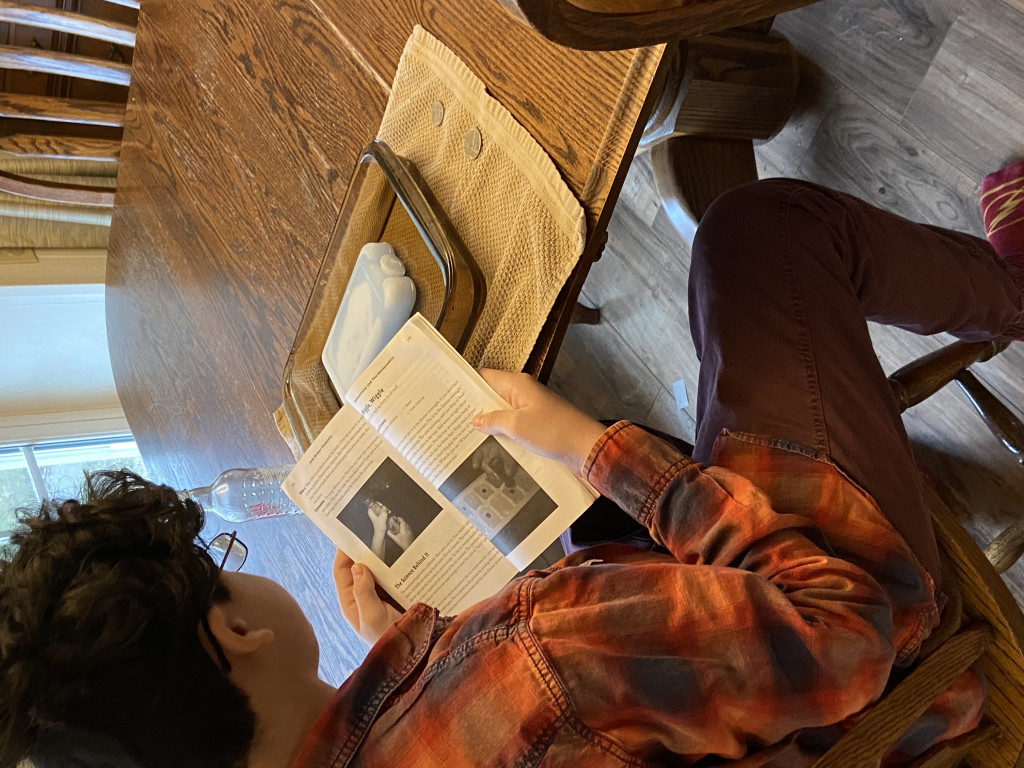
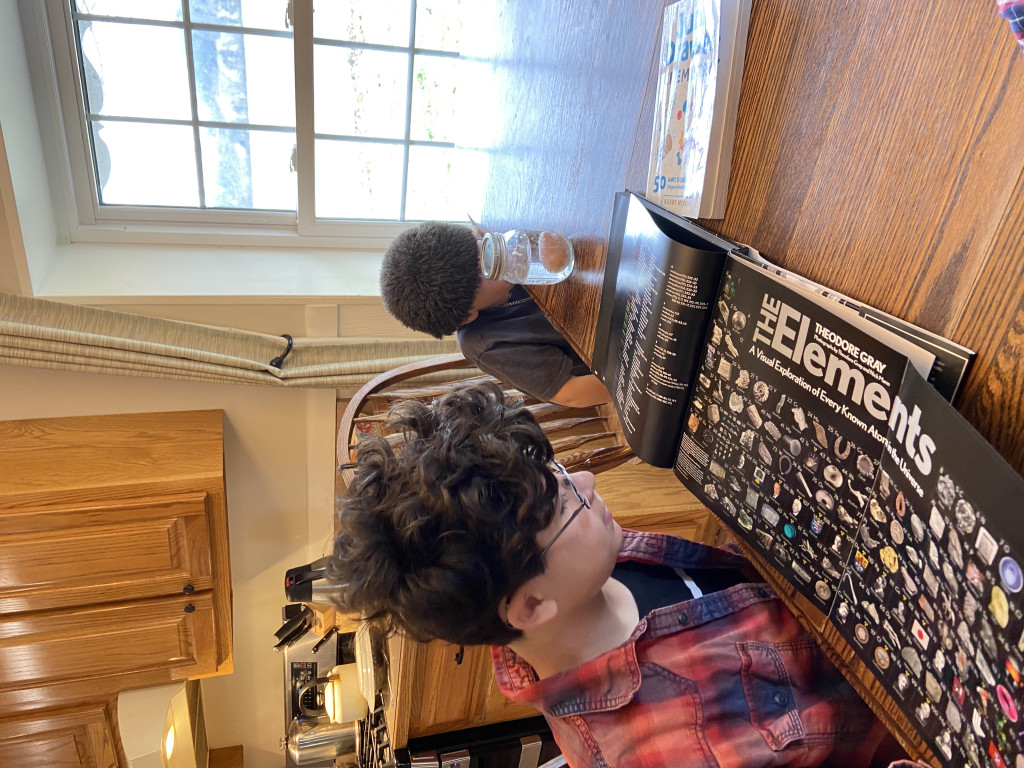
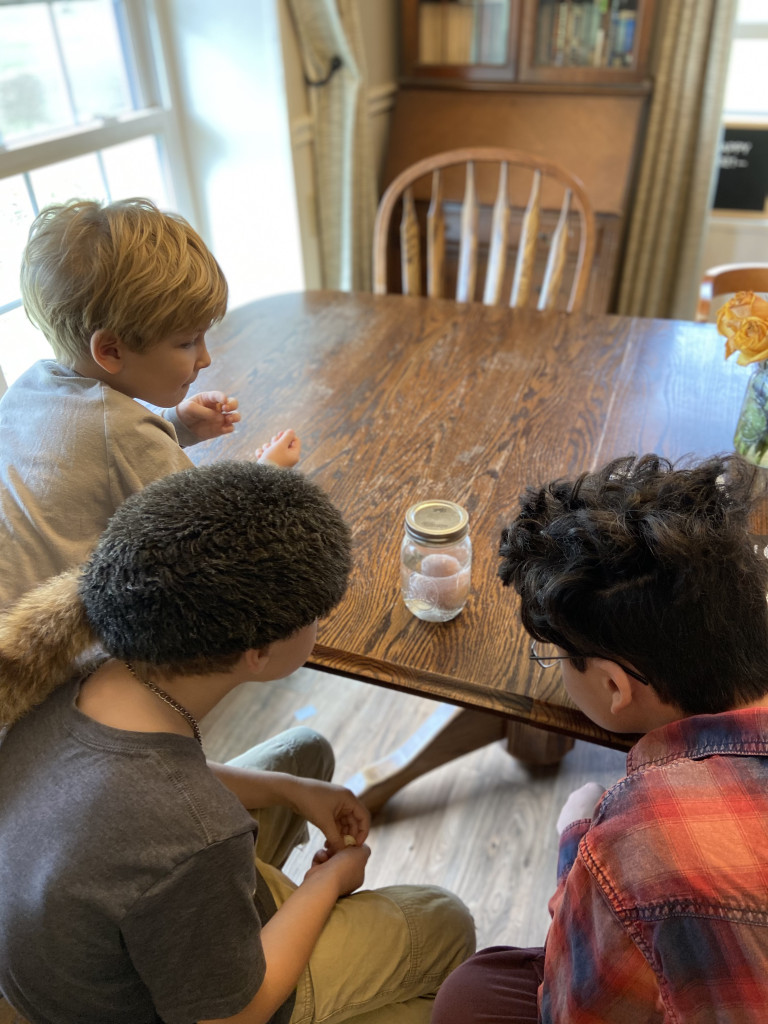
A few days later, when the longest experiment concluded, he was still every bit as enthused. He’ll present his findings to his CC class tomorrow.
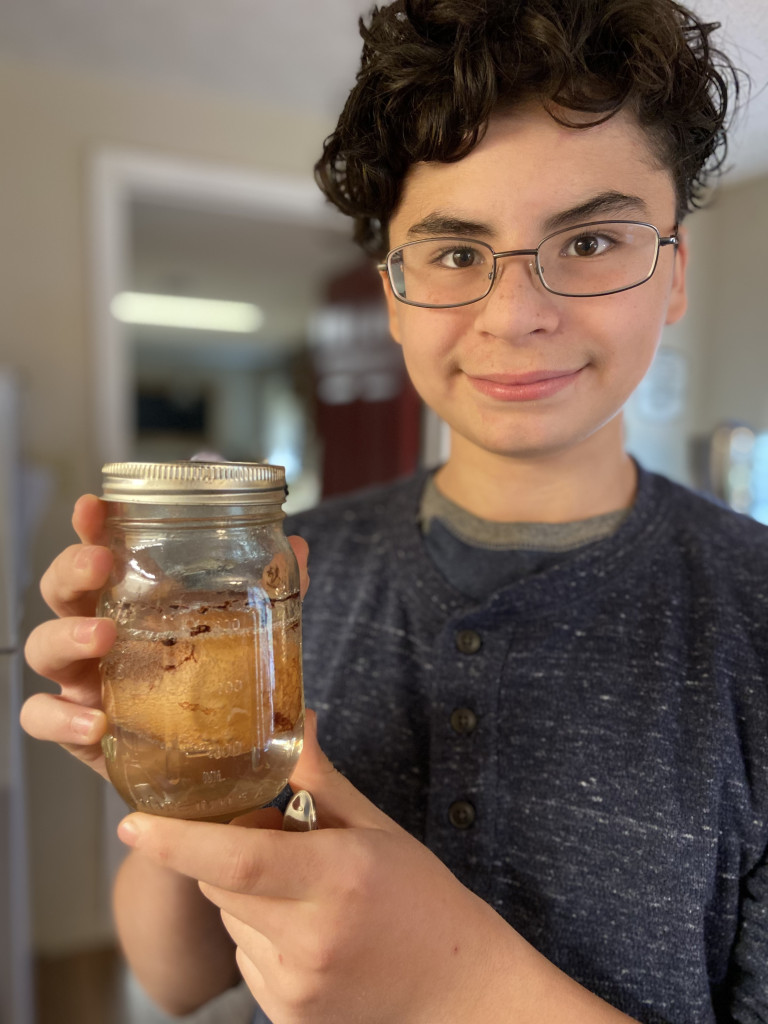
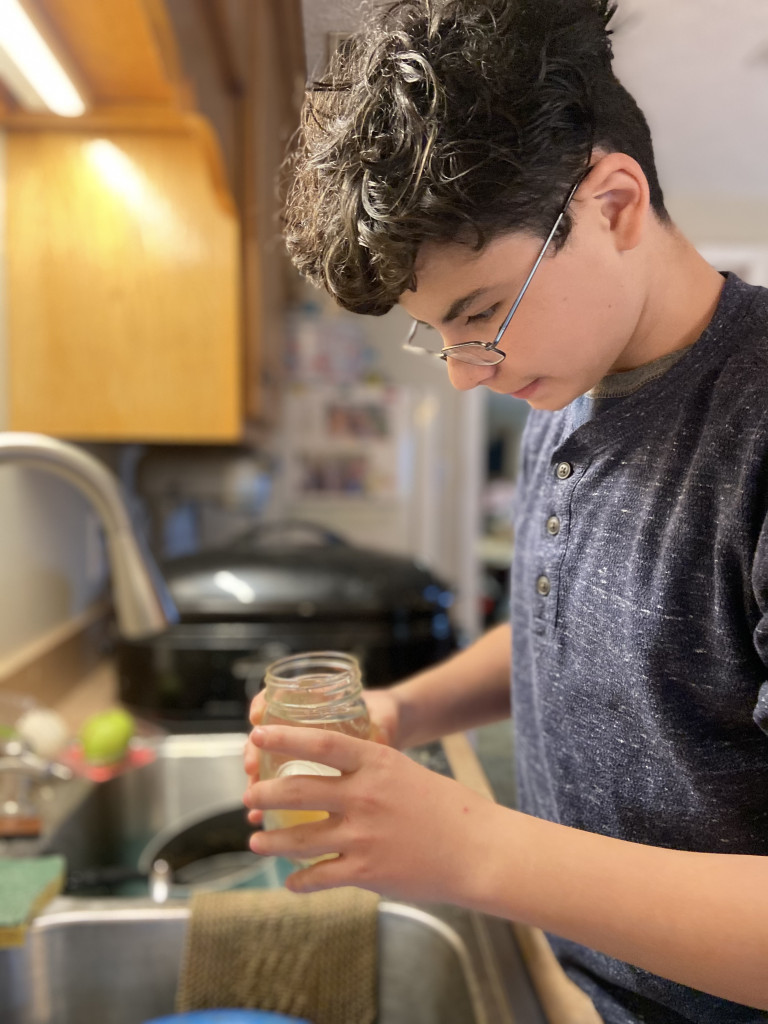
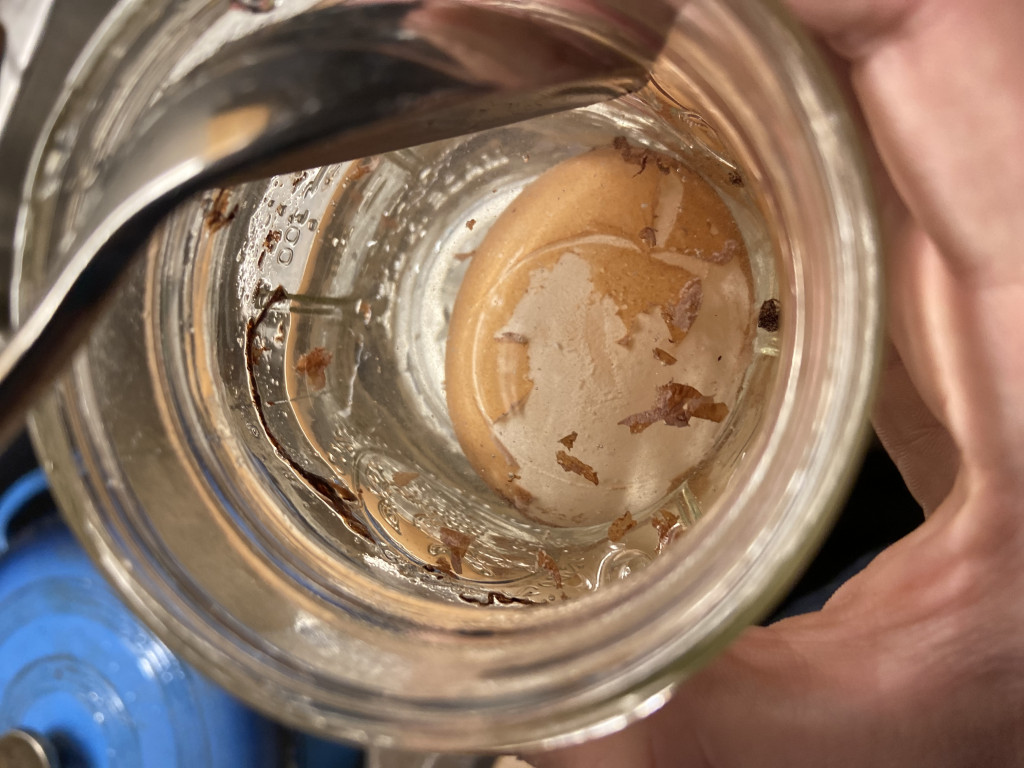
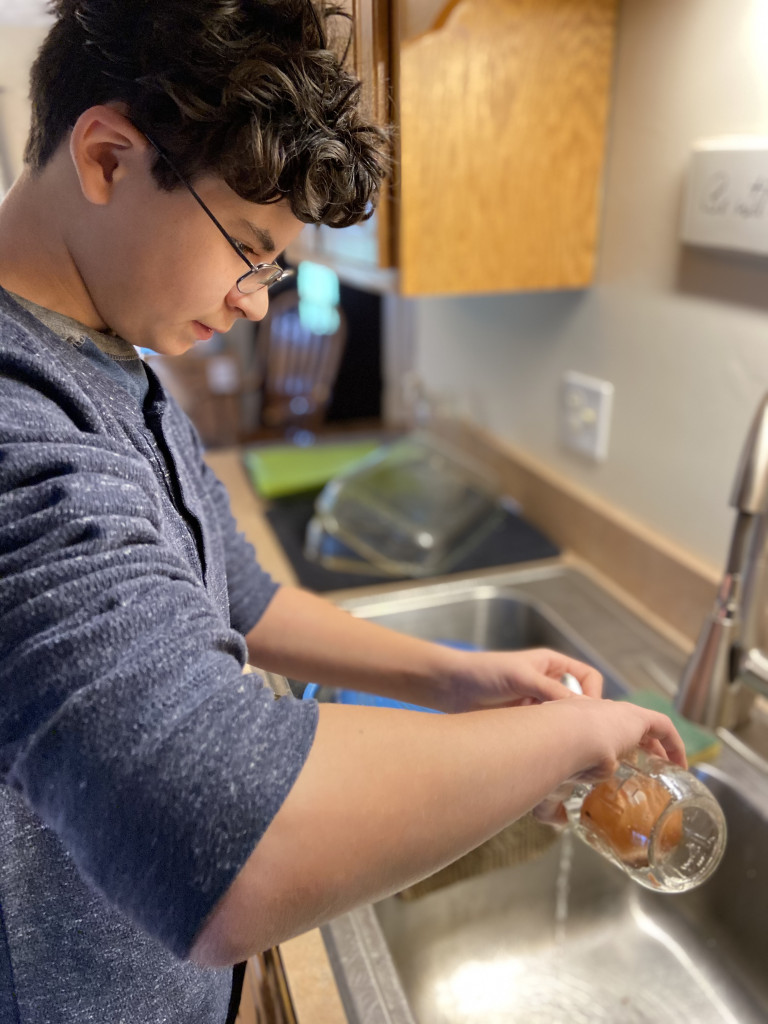
So yes, we’ve had purposeful chemistry lessons. We’ve read and explored in a slightly more formal way. But by and large, I’m making this unit about play. Discovery. Making connections. Asking questions. Trial and error. Science.
I’m including a long list of resources below in case you are looking for something chemistry-related for your own homeschool. These are games, books, experiment kits, and more—not curriculum. Hopefully they help someone have fun exploring chemistry and prevent some child, somewhere from growing up to be an adult who laments the unfortunate burning of a lab partner’s hair. I can’t guarantee that. But I can hope.
Chem4Kids is a great reference site! This page focuses on the 18 most common elements, and uses them to explain the basic concepts we’ll be discussing over the next few weeks.
This is a great, complete unit for older kids.
Online games that focus on the periodic table. Nice way to shake up and diversify learning for all stages.
On The Table is a game from TpT ($5) that does a wonderful job of helping slightly older kids master the concepts of the periodic table by using those first 18 key elements.
Quick Six is a simple, FREE game that needs some prep work (printing) but will help kids begin to recognize elements, names, and bits of info as they play. This board game from the same site takes prep as well, but is excellent, as is this bingo-style review.
The best dynamic periodic table, essential for the next few weeks of study. Bookmark this!
This table is clickable, and provides a video for each element. Again, bookmark this. It’s so useful!
For older kids at home, or possibly Journeymen and Masters students in class, this scavenger hunt can be adapted to help kids gain some familiarity with the periodic table and do some digging and more advanced thinking.
HomeschoolShare has a very in-depth unit on chemistry for older learners. It’s free, and comprehensive.
If you’re looking for some free printables and worksheets, check this site.
If you’re looking for something completely different, the University of Kentucky Chemistry Department offers up the Periodic Table of Comic Books. Pre-read, please. I’ve only looked at the earliest ones.
Definitely take the time to print these element cards! Great FREE resource! Also check out this printable periodic table, which can be customized with either pictures, for younger learners, or workds.
The Periodic Table of Elements Coloring Book is great for all ages. Lots of additional info here!
Periodic Table Color Tiles allow you to build your own table.
FReNeTiC: The Fun and Frenzied Board Game of the Elements brings fun to the study of chemistry. Younger kids can buddy with older ones for easier play. Another option is Periodic: A Game of the Elements, which is slightly more advanced.
Subatomic is a card game that mixes chemistry and physics. Quite advanced.
Covalence explains building molecules in board game format, while Ion does the same for compounds.
Learn the periodic table with a puzzle! This one is even more kid-friendly, but this one is my favorite.
The Mystery of the Periodic Table is an excellent living book from a Christian perspective that I use in my own home to guide our early chemistry studies. It makes an easy read-aloud, and offers up engaging rabbit trails as well as fascinating bits of biography for consideration. Highly recommended.
Elements: A Visual Exploration of Every Known Atom in the Universe is the kind of book that begs to be left out for kids of all ages to get their hands on. I can’t tell you how many hours adults and children alike will spend leafing through this beautiful book and absorbing more than you ever thought you’d know about the what and why of God’s world! This companion deck of cards has been on my To Buy list for some time. I can see all kinds of interesting educational opportunities with them!
What is the World Made Of? Solids, Liquids, and Gases is the best kind of beginner chemistry book, as it lays a great foundation for information to come without overwhelming.
The How and Why Wonder Book of Chemistry is an older volume but still accessible and relevant, not to mention simple for homeschool moms who need their hands held a bit on this particular topic! Demystifies chemistry and guides you through great rabbit trails with lots of images.
A Drop of Water: A Book of Science is a fabulous way to loop kids into wonder when it comes to chemistry.
Period table placemats are great as reference sheets, and also just as basic learning tools in your toolbox. Make verbal seek and find games, ask kids to find patterns, and more.
National Geographic’s Stunning Science Chemistry Set offers 15 high-interest experiments with thorough explanations.
Thames and Kosmos kits are always high quality. This one has 28 experiments and a big booklet detailing all the science.
This Kaboom! kit is super popular with homeschoolers looking for easy activities based in science that also have massive wow factor.
1 Comment
Comments are closed.